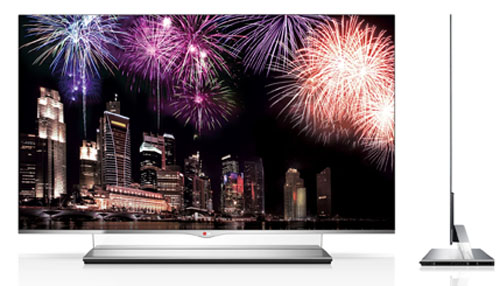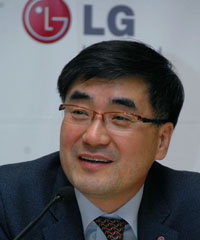LG takes the fight to Panasonic and Sony with early OLED sales in Japan
Company will launch 55in model in Japanese shops this spring; meanwhile Sony targets high-end US TV market


LG is set to launch its 55in OLED TV (above) in Japan this Spring, emphasising its intention to be the first to market with the new ultra-thin television technology.
That's according to Japanese press reports, which suggest LG wants to boost its profile in the Japanese TV market, traditionally dominated by domestic manufacturers such as Panasonic, Sharp, Sony and Toshiba.
LG being the first company with OLED TVs on sale will not only be a blow to Panasonic and Sony – both of which showed OLED technology at the recent CES 2013 trade show in the USA, but are thought to be some way off turning it into commercial products – but should also raise the company's profile in the Japanese TV market.

The roll-out of the OLED TV sees LG delivering on the promise made by the head of its Home Entertainment Company, Havis Kwon (right), at CES 2013. There he said '2013 is an important year because for LG, it marks the beginning of a new TV era.
'With game-changing products such as the OLED TV and Ultra HD TV, we are in a strong position strategically to lead the industry.
'Delivery of our Ultra HD TV well before the competition and the imminent release of our OLED TV in the first quarter of 2013 will give us a head start in a market where speed is a critical component of success.”
The Korean company's products were out of Japanese shops from 2008 until late 2010: if its OLED TVs take off in Japan, that should spur its local rivals to accelerate development.
Get the What Hi-Fi? Newsletter
The latest hi-fi, home cinema and tech news, reviews, buying advice and deals, direct to your inbox.
In Japan, as in other markets, the prices of LCD/LED TVs continue to fall, and all TV manufacturers are looking for a technology to tempt consumers to spend more on their next set.
The LG OLED (organic light-emitting diode) TV, which will also be available in the US and Europe by March, sells for KRW11m (£6450) in Korea, and is set to carry a $12,000 (£7600) price-tag in the States.
The push to sell premium-priced TVs is also evident in the USA, where Sony has reportedly sent out around 400 staff to work in retailers to boost sales of upmarket models, rather than resort to the discounting employed by some other brands.
Sony's US operation last year pushed retailers to sign agreements to maintain prices, in efforts to prevent discounting of its TVs; this new move is a further step in its attempt to keep prices high, and thus return its TV operations to profitability.

Phil Molyneux (left), who heads up Sony in the US, says that the company is more concerned with profitability, rather than trying to boost market share.
Of late its share of the US TV market has fallen as low as 3%, due to its refusal to discount, but Molyneux thinks the TV business is sustainable even at the 5% share the company currently holds.
For 2013, Sony will be putting its efforts in the US behind larger-screen TVs, as well as promoting the new generation of 4K Ultra HD TV models.
LG's 55in OLED TV is just 4mm thick and weighs less than 10kg. It uses a proprietary Four-Colour Pixel system, with a white sub-pixel in addition to the usual red, green and blue: this, LG says, enables it to 'create the perfect color output.'
The company adds that 'LG’s exclusive Color Refiner delivers even greater tonal enhancement, resulting in images that are more vibrant and natural than anything seen before. The 55-inch OLED TV also offers an infinite contrast ratio, which maintains optimal contrast levels regardless of ambient brightness or viewing angle.'
Andrew has written about audio and video products for the past 20+ years, and been a consumer journalist for more than 30 years, starting his career on camera magazines. Andrew has contributed to titles including What Hi-Fi?, Gramophone, Jazzwise and Hi-Fi Critic, Hi-Fi News & Record Review and Hi-Fi Choice. I’ve also written for a number of non-specialist and overseas magazines.
